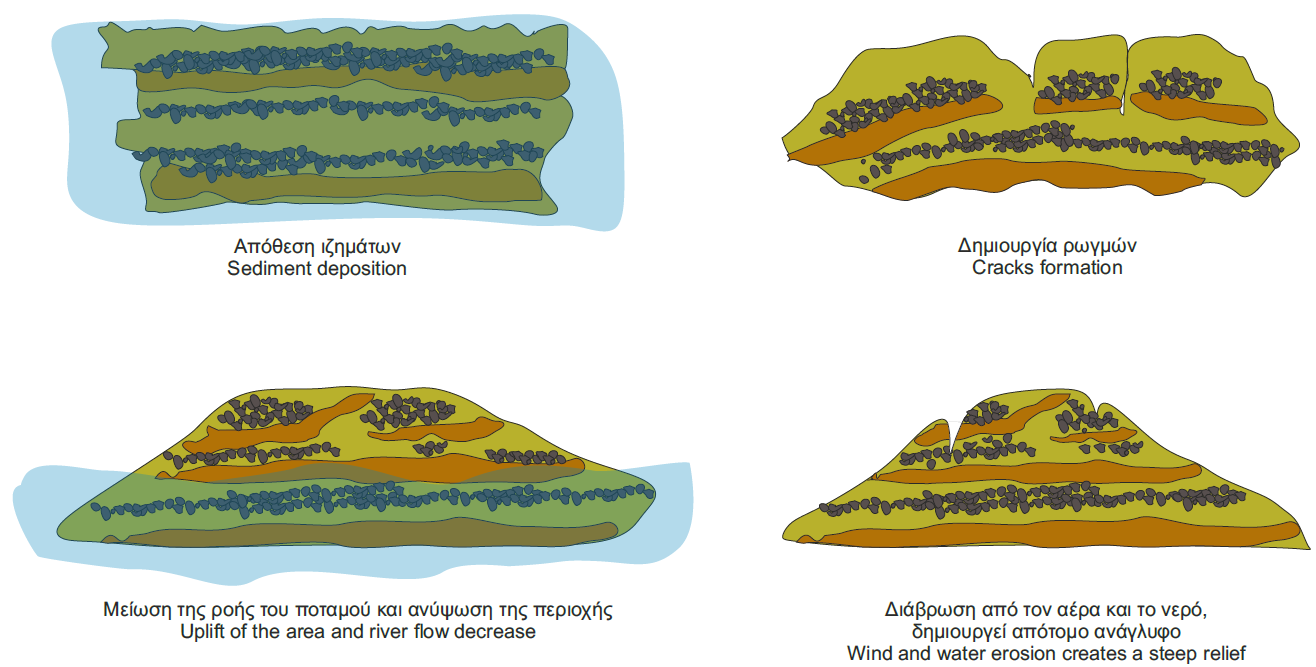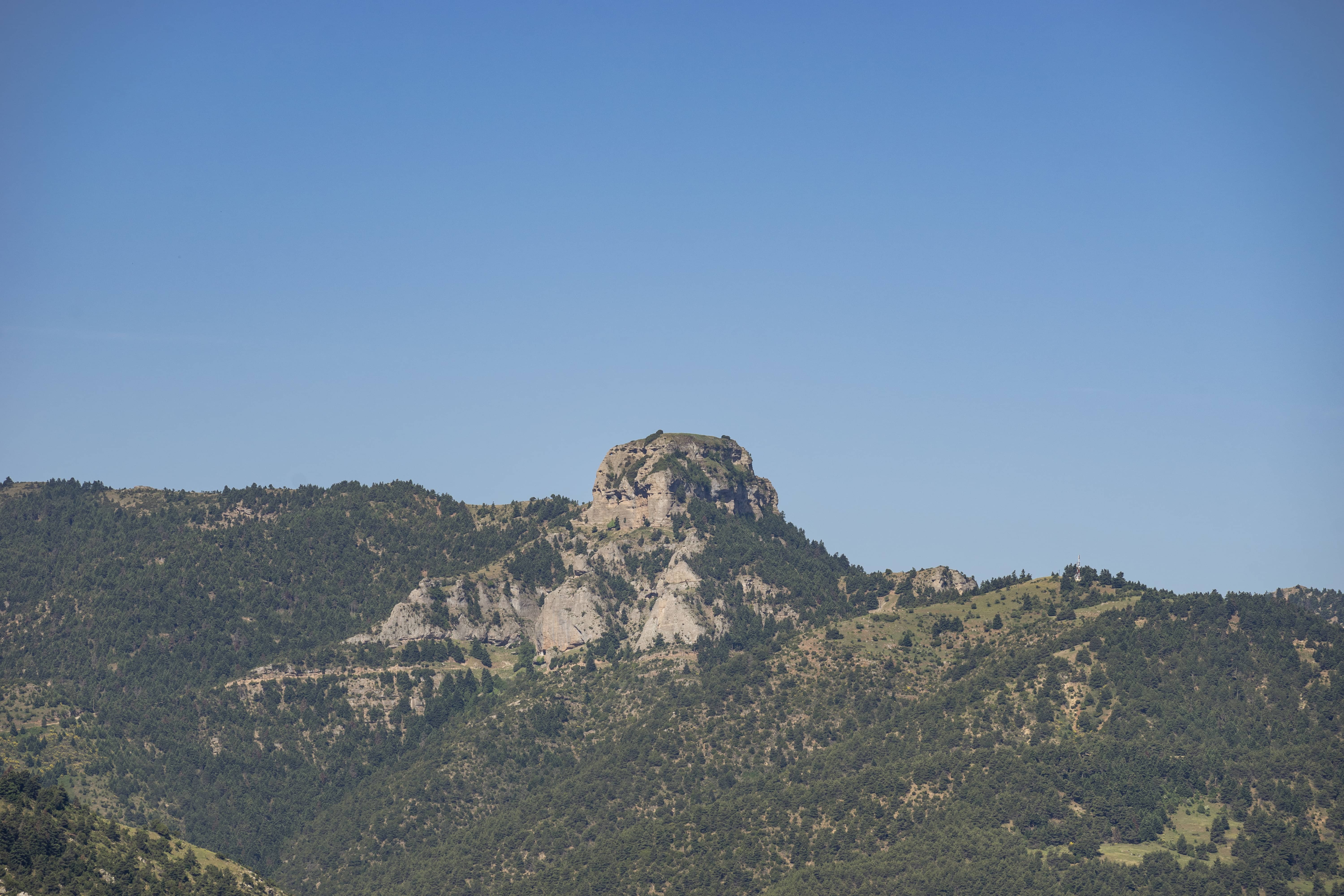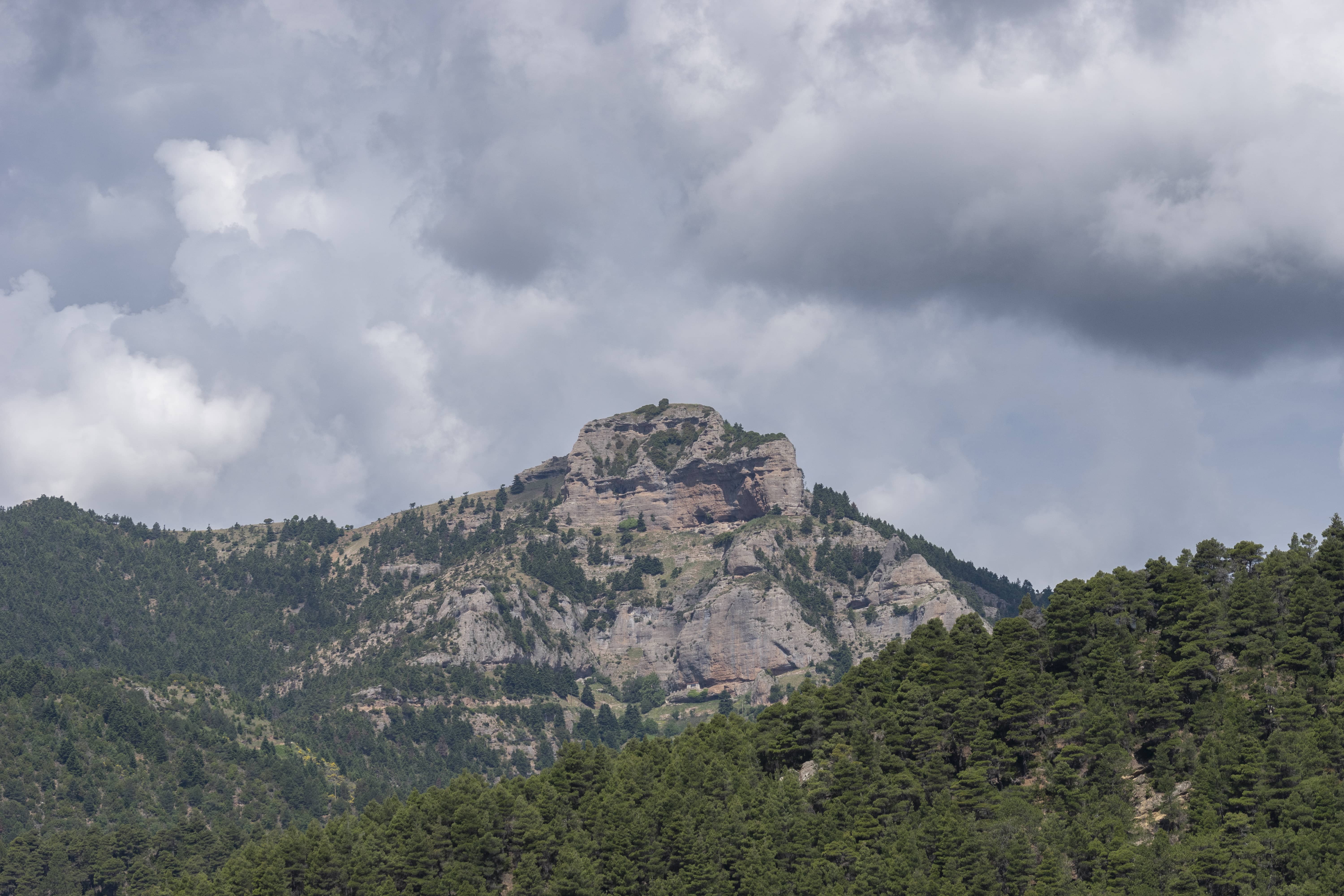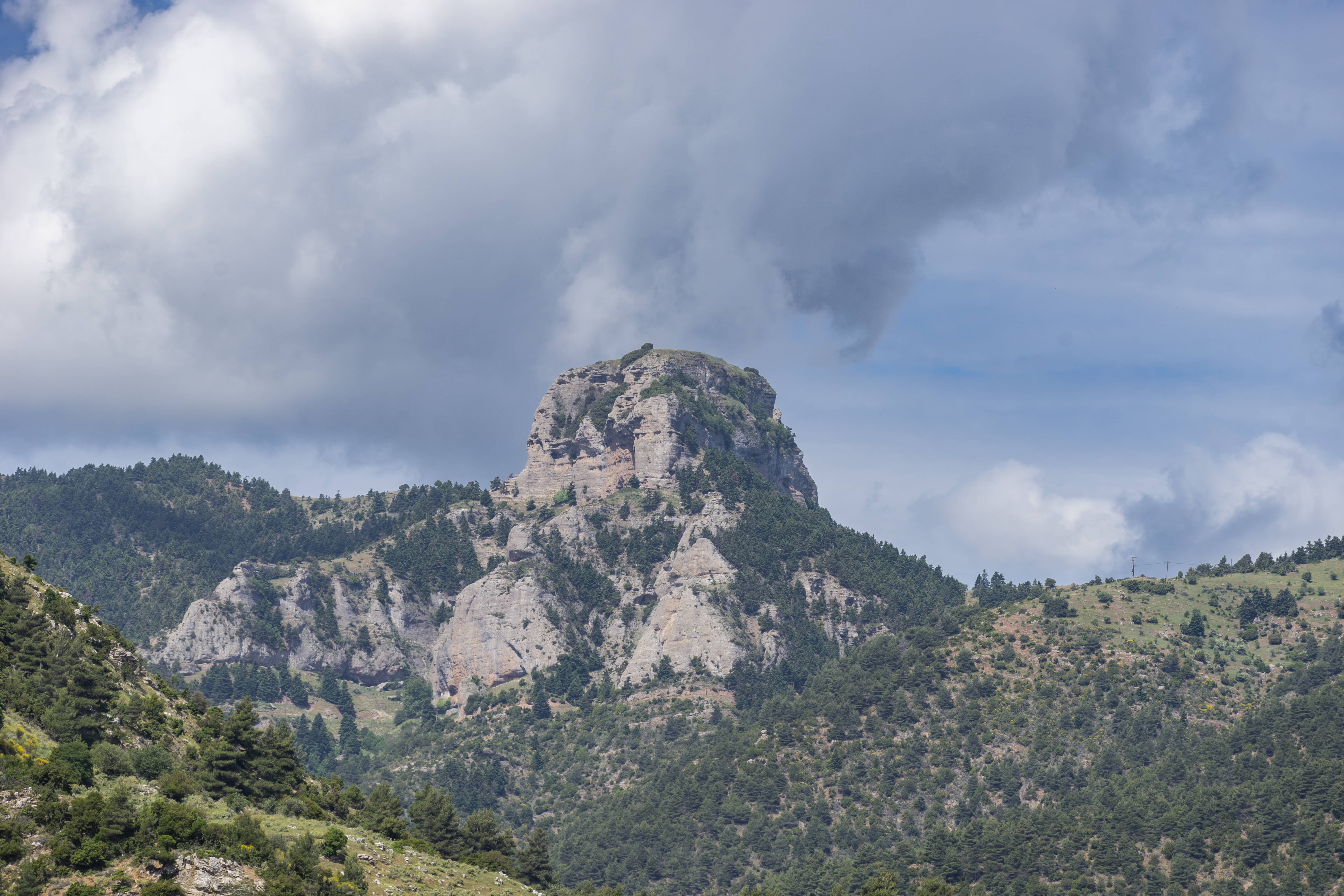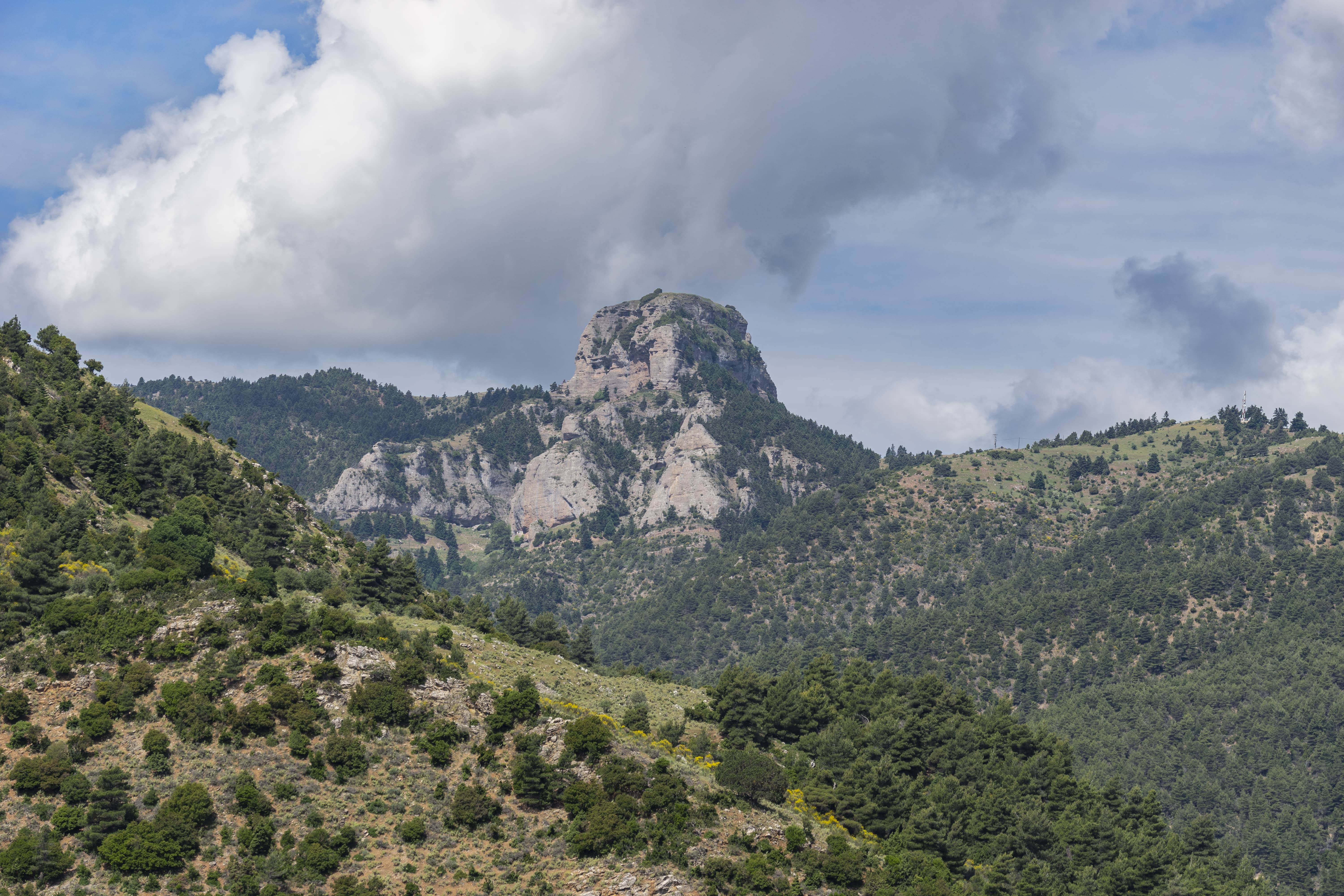THE PELOPONNESIAN METEORA
It is a rocky peak of Chelmos (1396m altitude) consisting of conglomerates. Their special shape is due to the erosion of the rocks by water and wind. An imposing landscape is created which resembles Meteora in Thessaly. In the shadow of these imposing vertical conglomerate rocks the small stone chapel of Ai-Lias is built.
Geodiversity
These sediments were deposited by the action of a river that existed in the area 3-1 millions of years ago, due to the steep slope of the stream bed and the reduction of the water velocity. The stones, sand and clay carried by the stream, after years, were welded together and created the conglomerates. The cobbles which constitute the conglomerates have rounded edges (cobbles), due to their rapid transport by the stream. A few thousand years after deposition, the area was uplifted due to faults. The same faults are responsible for the creation of the Corinth rift which extends at a rate of 10-15mm per year. The areas that lie south of the faults are getting uplifted creating Chelmos Mountain while the areas that are north of the faults are subsided creating the Corinth rift.
Biodiversity
The Geosite is located within the Special Protection Area (SPA) “OROS CHELMOS (AROANIA)-FARANGI VOURAIKOU KAI PERIOCHI KALAVRYTON” (GR2320013). The avifauna of the area is of great interest and includes birds of prey listed in Annex I of Directive 79/409/EEC, such as the Golden Eagle (Aquila chrysaetos), and the Eurasian eagle-owl (Bubo bubo).
The reptiles found in the area include the endemic Greek algyroides (Algyroides moreoticus), the Balkan green lizard (Lacerta trillineata), the grass snake (Natrix natrix) and the common wall lizard (Podarcis muralis).

